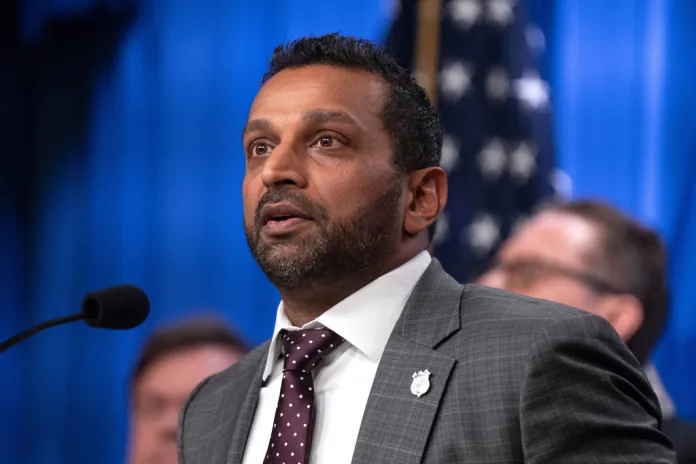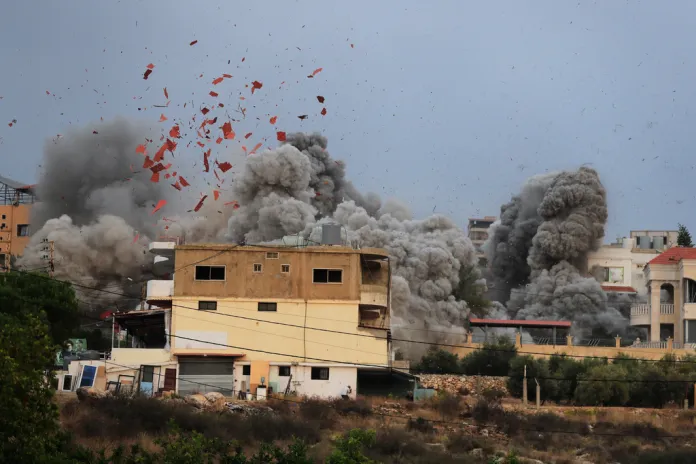Hezbollah leader Hassan Nasrallah assassinated by Israeli military – Washington Examiner
The article reports the assassination of Hezbollah leader Hassan Nasrallah by the Israeli military in airstrikes in Beirut, Lebanon. The Israel Defense Forces (IDF) confirmed the operation, which targeted Hezbollah’s central headquarters situated beneath residential buildings. Following the strike, footage of the devastation surfaced, revealing considerable destruction.
Nasrallah, who had led Hezbollah since 1992, was pivotal in the group’s military and political expansion and its alliance with Iran and other militant groups. His death represents a significant intelligence achievement for Israel and escalates the ongoing conflict with Iran and its proxies in the region. Israeli officials indicate that Nasrallah’s absence could create a vacuum in Hezbollah’s operations.
The aftermath of Nasrallah’s assassination saw continued Israeli airstrikes in southern Lebanon, alongside retaliatory fire from Hezbollah. Analysts suggest that Iran will have to reconsider its strategies in light of this development, weighing the risks of direct confrontation with Israel. The situation is further complicated by ongoing tensions, including recent provocative attacks from Hezbollah and Israel’s deliberate military responses aimed at neutralizing the threat from Hezbollah’s arsenals and leadership.
Hezbollah leader Hassan Nasrallah assassinated by Israeli military
Israel’s military assassinated Hezbollah leader Hassan Nasrallah in airstrikes in Beirut, Lebanon, on Friday, the Israel Defense Forces confirmed. Hours later, Hezbollah acknowledged the killing of its leader.
An Israeli military spokesman said the strike targeted Hezbollah’s “central headquarters,” which was located “under residential buildings in the heart” of Dahiyeh, in Beirut. Videos circulated online of the destruction the airstrike caused, hours before word of Nasrallah’s death was confirmed.
The IDF posted a graphic on X, which showed all of Hezbollah’s senior leadership being wiped out, saying: “We searched up ‘dismantled’ on the internet, this is the picture that came up.”
We searched up “dismantled” on the internet, this is the picture that came up: pic.twitter.com/C5p3jmhwIZ
— Israel Defense Forces (@IDF) September 28, 2024
Nasrallah, 62, had been Hezbollah’s leader since Israel assassinated his predecessor, Abbas al-Musawi, who was killed in an Israeli airstrike in 1992. Over his more than three decades leading Hezbollah, he oversaw the significant development of the U.S.-designated terror group’s arsenal, while also further cementing itself within Lebanon’s political sphere, and by advancing Iran’s “axis of resistance” mission.
“In recent years Nasrallah had played an increasing role in Iran’s nexus of proxies that include Hezbollah, Palestinian Islamic Jihad, militias in Iraq and the Houthis in Yemen. Nasrallah and Hezbollah in general had coordinated closely with Hamas, Palestinian Islamic Jihad and Iran. Nasrallah helped fill the shoes left by the death of IRGC Quds Force head Qasem Soleimani in 2000. Therefore, if Nasrallah has been killed, it would leave a major hole in Iran’s operations in the region,” Seth Frantzman, an adjunct professor fellow with the Foundation for Defense of Democracies, told the Washington Examiner.
Israel’s extraordinary intelligence success
Nasrallah’s death is seemingly the culmination of an extraordinary intelligence success for Israel, which began with the dramatic remote explosions of pagers less than two weeks ago. It also marks a dramatic escalation in the conflict that has engulfed the Middle East promulgated by both Iran’s proxies attacking Israel, and Israel’s escalating responses. The conflicts have gone on for nearly a year but the killing of Nasrallah will could result in an Iranian response.
Nasrallah was believed to be one of the group’s last remaining leaders. Last week, Israel targeted and killed Ibrahim Aqil, the head of Hezbollah’s operations and the commander of their Radian Force, while they previously targeted and killed Fuad Shukr, the highest ranking military commander in Hezbollah, Wissam al-Tawil, Abu Hassan Samir, Taleb Sami Abdullah, and Mohammed Nasser. With their senior leadership now gone, it’s unclear whether Hezbollah can or will maintain its attacks on Israel.
“Iran will have to weigh its options now. It does not want to confront Israel directly and risk retaliation. Iran now knows Israel is serious, after the killing of Hamas leader Ismail Haniyeh. Iran will know that Israel is in no mood to mess around after a year in which Iran sought to wage a multi-front war using proxies against Israel,” Frantzman added.
Iranian Supreme Leader Ayatollah Ali Khamenei warned that Israel will “regret their actions’.
“The fate of this region will be determined by the forces of resistance, with Hezbollah at the forefront,” he said.
Ali Karki, the commander of Hezbollah’s southern front, was also killed in the strike, as were other hezbollah commanders, according to the IDF. The strikes likely resulted in civilian casualties given they targeted the HQ, which was under what used to be buildings.
Israel’s Air Force continued to carry out strikes in southern Lebanon on Saturday following the one that killed Nasrallah targeting what it said was Hezbollah’s arsenal, while Hezbollah fired projectiles into Israel.
The strike occurred as Israeli Prime Minister Benjamin Netanyahu was in New York for the United Nations General Assembly. During his address Friday morning, the Israeli leader warned his country’s enemies, Iran in particular, that they would continue to militarily defend themselves against attacks.
Hezbollah began attacking Israel on Oct. 8, in solidarity with Hamas, who a day earlier, carried out the largest terror attack in Israel’s history.
Amid possible Israel-Saudi normalization efforts last fall, Hamas carried out the largest terror attack in Israel’s history to thwart that progress toward normalization with Israel. Hamas terrorists overpowered the southwestern border and poured into Israeli communities where they killed about 1,200 people and kidnapped about 250 others.
While about a hundred hostages remain in Gaza, Israeli forces have significantly degraded both Hamas’s senior ranks, as well as their arsenal. Israel’s military has also destroyed much of Gaza’s infrastructure and has killed tens of thousands of civilians.
Over the last year, Israeli officials have said Hezbollah has launched about 8,000 projectiles mainly into northern Israel. Israel evacuated more than 50,000 people from northern Israel who remain displaced from their homes, while leaders now say their recent escalation is designed to end Hezbollah’s continuous fires and allow the Israeli civilians to return to their homes.
Hezbollah refused to stop its attacks on Israel, saying it would only do so if Israel and Hamas agreed to a ceasefire deal but U.S. officials said it was Hamas’s leader, Yahya Sinwar, who was the impediment to an agreement. The U.S. put out a joint statement with several other leaders calling for a three-week ceasefire between Israel and Hezbollah before the Nasrallah strike.
Iran has funded and supported several proxy forces and terror groups in the Middle East, all of which seek the destruction of the State of Israel. Hezbollah is widely considered to be Iran’s most formidable fighting force, and is positioned along Israel’s northern border. But, Israel has significantly degraded Hezbollah’s senior level ranks over the last several weeks.
Hezbollah, unlike Hamas, has a significant arsenal of guided and unguided missiles that could be used to target Israeli cities that infrequently come under assault including Tel Aviv and Jerusalem. Earlier this week, Israel’s air defense intercepted a Hezbollah-fired ballistic missile over Tel Aviv, which could be a foreshadow of Hezbollah’s response to the death of its leader.
Israel and Hezbollah have been enemies for decades, with the latter group forming 1982 in response to Israel’s invasion into southern Lebanon amid the Lebanese civil war. Hezbollah began participating in the Lebanese government in 1992.
The two sides most recently went to war in 2006, which was prompted when Hezbollah conducted a cross-border raid in which three Israeli soldiers were killed and two others were kidnapped. Israeli forces then invaded southern Lebanon. The war lasted for about a month and resulted in the deaths of more than 1,100 people on both sides, more than 4,400 people were injured, while hundreds of thousands of Lebanese civilians had to flee their homes, according to the Red Cross.
After the war ended, Nasrallah admitted that if he knew the snatching of the Israeli troops would’ve led to such a war, he would “absolutely not” done it.
" Conservative News Daily does not always share or support the views and opinions expressed here; they are just those of the writer."




